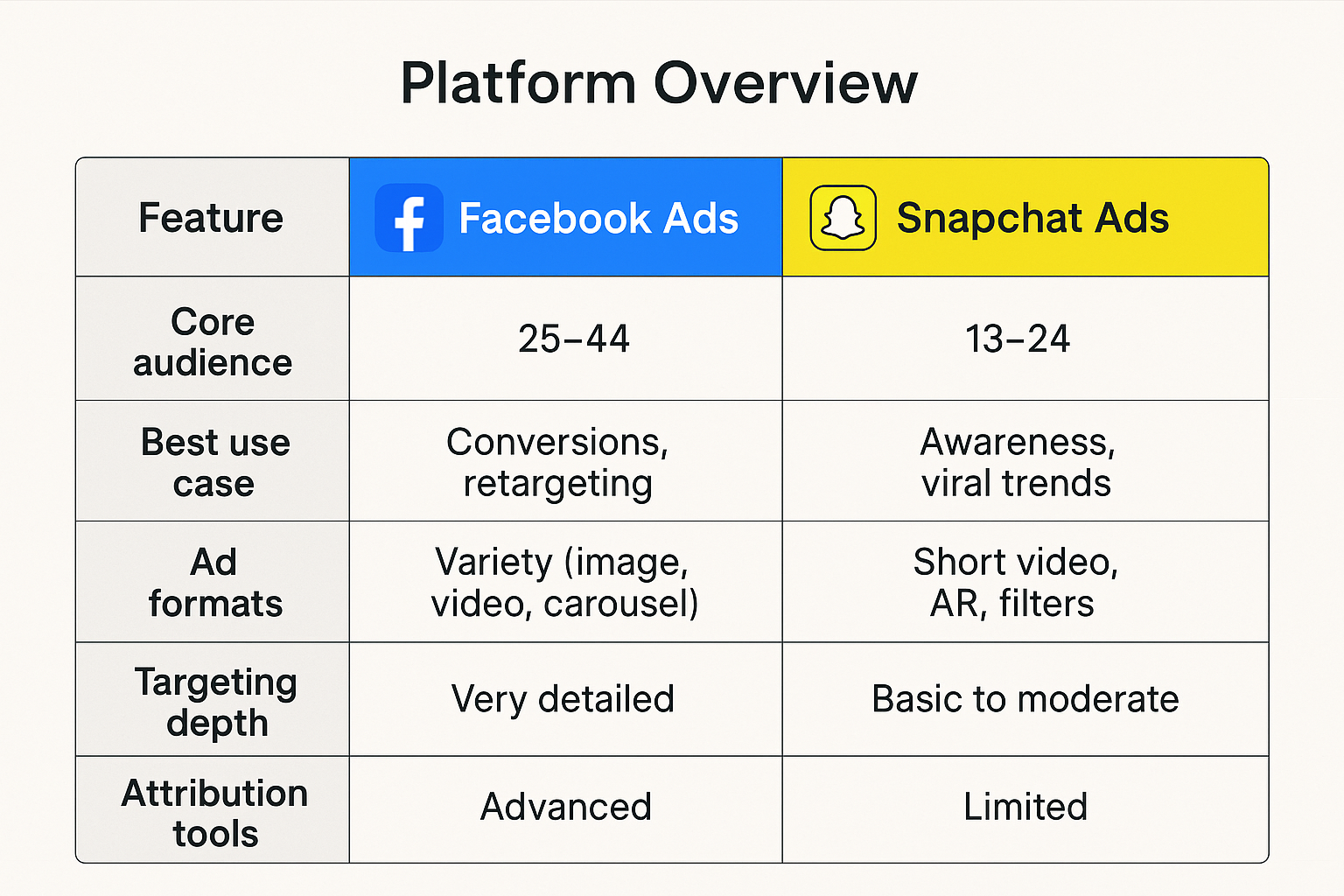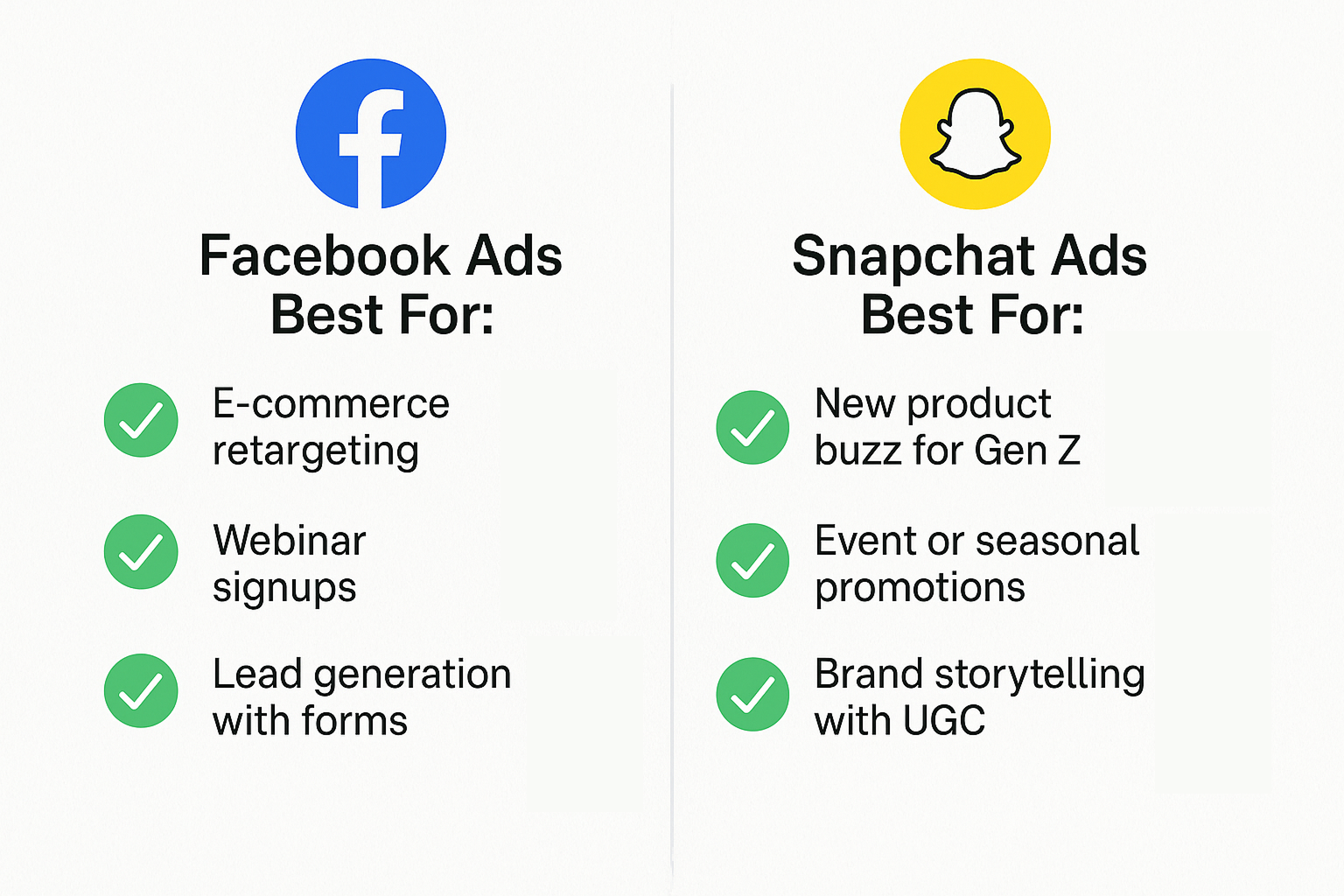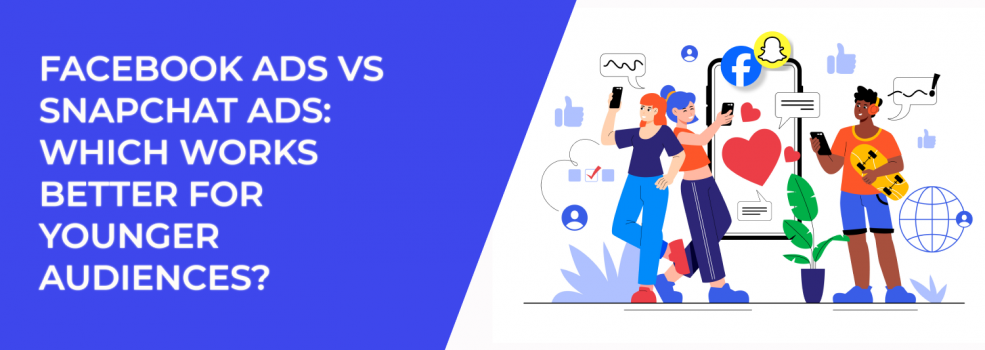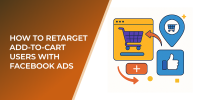If your goal is to reach younger audiences — especially Gen Z and young Millennials — choosing the right ad platform can make or break your results. Facebook Ads and Snapchat Ads both offer opportunities, but their effectiveness depends on who you’re targeting, how you structure your campaigns, and what kind of content you’re running.
So, which one actually works better for younger audiences? Let’s take a closer look at the platforms, their strengths, and when to use each one.
Platform Breakdown: What Advertisers Should Know
Facebook Ads
Still a dominant force in digital advertising, Facebook offers powerful tools for ad placement, audience building, and conversion tracking. The platform is ideal for data-driven campaigns, thanks to Meta’s advanced targeting and integration with Instagram. Brands with higher customer lifetime value (CLV) products or services, like insurance or SaaS, often benefit the most from Facebook’s robust analytics and audience tools.

Snapchat Ads
Snapchat has built a stronghold with younger users. Over 75% of U.S. internet users aged 13 to 34 are on the platform. Its ad formats are playful, immersive, and mobile-first — perfect for quick interactions and discovery-style browsing. It’s a strong match for trendy fashion brands, fast-moving consumer goods, and entertainment products looking to ride the wave of viral content.
Both platforms have unique strengths, but their user behavior and ad experience are quite different.
Audience Reach and Engagement
Facebook’s Reach:
-
Covers all age groups, but usage is skewing older.
-
Gen Z uses Facebook less frequently, often for groups or Messenger only.
-
Great for long-term brand building and retargeting.
Snapchat’s Reach:
-
75%+ of U.S. Gen Z and young Millennials are active daily.
-
Users open the app over 30 times a day on average.
-
High engagement with short-form video and creative tools like filters.
While Facebook casts a wider net, Snapchat offers hyper-focused access to younger demographics. If you're trying to boost awareness of a new streetwear drop or drive pre-orders for a concert or festival, Snapchat delivers immediate attention. But if you're nurturing leads for a coaching program or selling higher-ticket items, Facebook's retargeting features may provide better ROI.
Ad Formats and User Experience
Facebook offers:
-
Image, video, carousel, and collection ads.
-
In-app lead forms and dynamic product ads.
-
Deeper conversion tools via Meta Pixel and offline events.
Snapchat’s ad formats include:
-
Snap Ads (vertical, full-screen, short-form).
-
Story Ads in Discover.
-
AR Lenses and branded filters.
-
Collection Ads with swipe-up CTAs.
Snapchat wins when it comes to creating immersive, native-feeling experiences. But Facebook gives you more campaign structure and control. For example, a CPG brand might use Snapchat filters to launch a fun back-to-school campaign and then use Facebook carousel ads to feature product bundles for parents.
For help choosing between ad types and formats, read: The Ultimate Guide to Facebook Ad Formats.
Targeting Options: How Precise Can You Get?
This is one of the biggest differentiators.
Facebook Ads offer:
-
Detailed targeting by behaviors, demographics, interests.
-
Retargeting using the Meta Pixel and engagement data.
-
Custom and lookalike audiences using uploaded data.
-
Interest stacking and layered targeting options.
Snapchat Ads offer:
-
Age, gender, location, device type, and Snap Lifestyle Categories.
-
Lookalikes based on Snap Pixel data.
-
Retargeting to site visitors or app users (limited by cookie data and privacy policies).
If you're running hyper-targeted or remarketing campaigns, Facebook Ads still have a major edge. A local gym could use Facebook to retarget website visitors who checked class schedules, while Snapchat might be used to announce a flash sale with geofilters around nearby colleges.
Learn more about building effective segments: Everything You Need to Know About Facebook Ads Audiences.
Costs, CPMs, and ROAS
Snapchat:
-
Lower average CPMs and CPCs than Facebook.
-
Great for awareness campaigns or app installs.
-
Limited on lower-funnel tracking and attribution.
Facebook:
-
Higher ad competition, especially in e-commerce.
-
Better tools for tracking purchases and optimizing conversion rates.
-
More scalable campaigns with ROAS-focused strategies.
Low cost doesn’t always mean better ROI. Facebook often wins when you want to drive direct sales — especially with retargeting in play. Snapchat can be an excellent addition to the top of the funnel, helping generate buzz and initial interest at a lower cost.
Still seeing low returns? These issues might be at fault: Facebook Ads Not Converting: How to Fix It.
Creative Approach: What Performs Best?
Snapchat users love:
-
Short, unpolished UGC-style videos.
-
Humor, filters, music, and behind-the-scenes content.
-
Fast, trend-reactive creative updates.
Facebook users respond to:
-
Strong visuals paired with compelling copy.
-
Testimonials, product tutorials, and value-driven content.
-
Mixed formats: static images, video, carousels.
On Snapchat, your content needs to blend into the user experience — like a friend’s Story. Facebook gives you more room for persuasion and education. Just don’t overlook ad fatigue. Frequent creative refreshes are essential on both platforms. For instance, if you're running daily story ads on Snapchat, refreshing filters or visuals every week can keep engagement high.
Here’s how to spot the early signs: Ad Fatigue on Facebook: How to Spot It Early and Fix It Fast.
When to Use Facebook vs Snapchat

Choose Snapchat Ads if:
-
Your product targets Gen Z or younger Millennials.
-
You want to create buzz or brand familiarity.
-
Your creative team can move fast and adapt to trends.
-
You’re promoting something visually engaging or seasonal (like festival gear or limited-edition drops).
Choose Facebook Ads if:
-
You’re optimizing for purchases, lead generation, or app installs.
-
You need precise targeting or retargeting tools.
-
You’re working with detailed customer segments or product catalogs.
-
You want to build warm audiences and nurture them across multiple touchpoints.
For advanced targeting ideas, explore: Facebook Ad Targeting 101: How to Reach the Right Audience.
Final Thoughts
If you’re targeting younger audiences, Snapchat is the clear leader for awareness and top-funnel engagement. But if you want to drive conversions, track results, and scale with more data — Facebook Ads remain unmatched.
In many cases, the smartest approach is to combine both:
-
Use Snapchat to generate interest,
-
then retarget on Facebook with more focused, conversion-driven creative.
Whether you’re brand new to social advertising or looking to refine your current campaigns, the key is understanding where your audience is — and what each platform does best.

